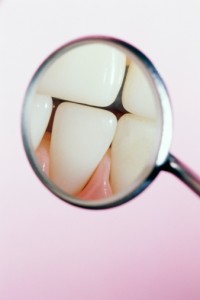5 Mouth Myths Debunked
Get the real facts about oral hygiene and oral health

Myth: Sugar is the top cause of cavities.
Fact: Sugar doesn’t actually “rot your teeth” on contact like certain old wives tales would have you believe. It’s not the sugar that does the damage, but the acids produced by the plaque bacteria that eat the sugar. These bacteria like carbs such as rice, potatoes, bread, and certain fruits and veggies just as well as they like sugar.
Myth: Consuming a little bit of sugar won’t hurt my teeth.
Fact: It’s not the amount of sugar that you consume, but the frequency that matters. It’s better to feed cavity-causing bacteria one time than several times, even if the total amount of sugar consumed is less. Drinking a huge cup of soda one sitting is better sipping a smaller cup all day long, because the total amount of time that sugary residue is left on your teeth will be much less if you drink it all in one go. After eating or drinking anything sugary, the natural action of your saliva will help wash away the sugar and limit the damage that decay-causing bacteria can cause.
Myth: Kids are much more likely to get cavities than adults.
Fact: In the past 20 years, tooth decay in American kids has actually been cut in half, thanks to better preventative care and access to things like fluoridated water and sealants. Tooth decay in senior citizens, on the other hand, has actually increased, perhaps due to longer life expectancies or increased use of medications that cause drymouth and limit the production of saliva, the body’s natural defense against tooth decay. The truth is that it is your oral hygiene habits rather than your age that dictate how likely you may be to get cavities.
Myth: All fillings need periodic replacement
Fact: A well-placed, high-quality filling can last a lifetime in some cases. Factors like tooth wear and oral hygiene habits will affect how long a given individual’s fillings may last. Unless a tooth cracks or a cavity is allowed to develop around the filling, it will not necessarily need to be replaced.
Myth: You don’t need to visit the dentist to know if you have a cavity or gum disease.
Fact: Most cavities are practically symptomless, until they reach the advanced stage at which a tooth’s nerve is affected. The same is true of mild gum disease—you may not notice any of the traditional symptoms such as soreness or bleeding, yet still have an infection. By visiting the dentist, you can get cavities and gum disease diagnosed and treated in their early stages, thus hopefully preventing serious complications in the future.




